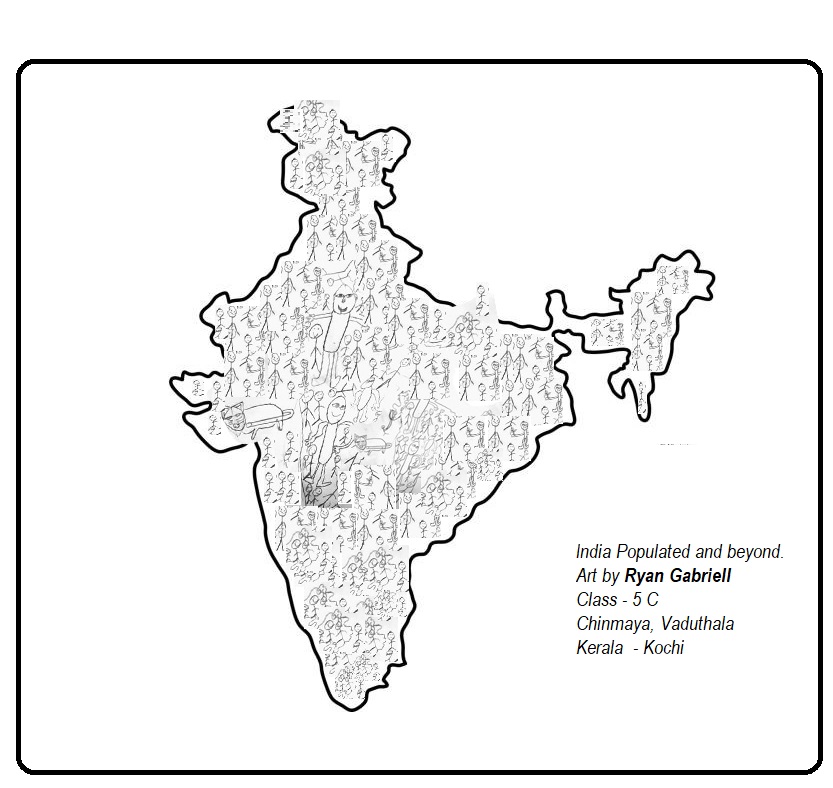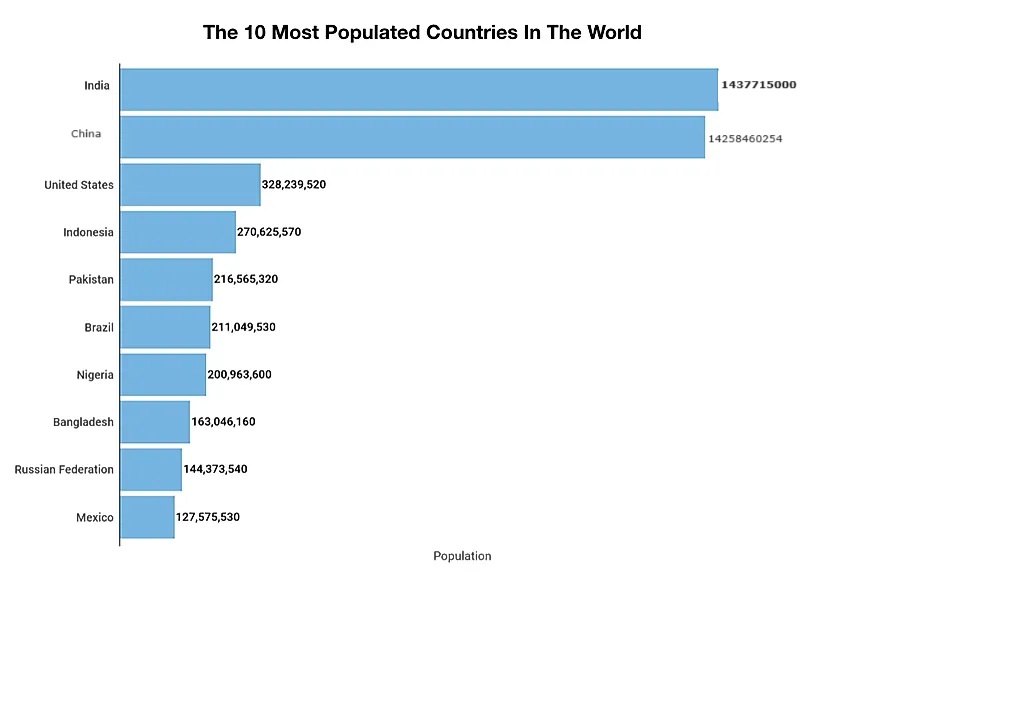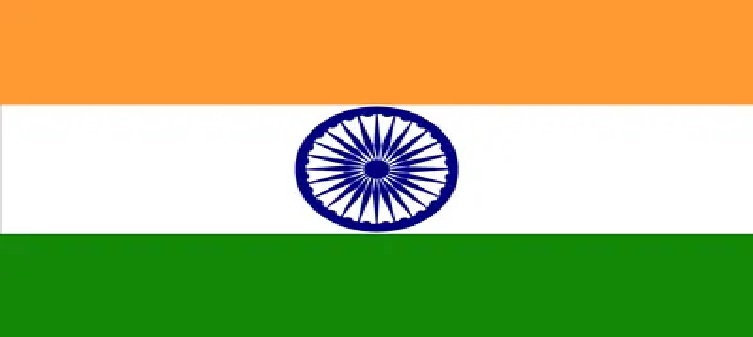Yes, India is now the most Populated Country The strong holder of the most populated country was wrestled from China and now India owns it. It’s not officially announced but unofficial calculations are providing the
Table of Contents
ToggleIndia - Most Populated Country

INDIA HOUSEFULL!!
Yes, India is now the most Populated Country The strong holder of the most populated country was wrestled from China and now India owns it. It’s not officially announced but unofficial calculations are providing the facts.
Growth of population - Most Populated Country

INDIA HOUSEFULL!!
We can see how the growth crept slowly to today’s mark and still growing. It’s high time the Government took steps to control the population growth else all kinds of issues will start popping.

Benefits of being the Most Populated Country
Being the most populated nation comes with several benefits:
Economic Strength:
A large population can contribute to a strong economy. With more people, there is a larger labor force, which can lead to increased productivity, innovation, and economic growth.
Market Potential:
A large population provides a vast domestic market for businesses. This can attract investment and stimulate economic activities, leading to job creation and increased consumer demand.
Cultural Diversity:
A diverse population offers a rich tapestry of cultures, traditions, and perspectives. This diversity can foster creativity, tolerance, and a vibrant social fabric.
Human Resources:
A large population means a larger pool of talent and skilled professionals. This can be advantageous for various sectors, including education, healthcare, technology, and research.
Political Influence:
A nation with a large population often commands significant political influence on the global stage. It can have a stronger voice in international affairs and negotiations.
Innovation and Development:
A large population can drive innovation and technological advancements. With more people, there is a higher likelihood of generating groundbreaking ideas and solutions to societal challenges.
Tourism Potential:
A populous nation can attract tourists due to its cultural richness, historical sites, natural landscapes, and diverse experiences. This can boost the tourism industry and contribute to economic growth.
Social and Sporting Events:
Hosting social and sporting events becomes more feasible in a highly populated nation. These events can bring international recognition, tourism revenue, and promote national unity.
It is important to note that while being the most populated nation has its advantages, it also poses challenges such as resource management, infrastructure development, and ensuring the well-being of the population.
Reasons behind India' becoming Most Populated Country
- YOUNG GENERATION: The biggest factor behind India’s massive population is its young people: 650 million Indians—nearly half the country’s population—are below the age of 25 whereas most of the world has a declining youth or birth rate and some even have a bigger old age generation than the young generation.
- FERTILITY RATES: The total fertility rate (TFR) is a major dominator of the population growth rate. TFR is the average number of children women would bear on surviving to the end of reproductive life having the same probability of child-bearing in each age interval as currently prevails across the population.
- EXTENDED LIFE SPAN: If you haven’t noticed, the life period of a person has been extended and people are living much longer. I remember my grandfather needed a rope tied to the attic for him to get up and people murmured ‘He`s 60’ as if it was a long time to live. Yes, it was in those periods people died by the time they were 60-65.
- HEALTHY OLD AGE: The life is not just extended, it’s healthy also. People go to work after their retirement through contracts as supervisors etc. He is totally capable of looking after himself for another 10-15 years.
- EARNING OLD AGE: Instead of a dying old man whose medical bill is more than you can support, you now have a healthy old man who is still an important earning and contributing factor and that extra wealth extends to 10 – 20 years, giving the young couple peace of mind, well settled and lots of time for the lovemaking.
- GOVERNMENT SUPPORT: Government support is another factor. Free rations, Subsidized rations, free electricity, education, water, stipends, etc make the below-poverty group copulate more in order to get the free gifts. Even a beggar woman on the road will have three to four kids around her. The kids are used as sympathy during their childhood for begging and when they are 8-10 years, they are sent to factories to earn. So, the more population the better for below-poverty families. Unknowingly in supporting them, Government has not checked their lifestyle and contributed to the Indian population growth.
- RELIGIOUS & FANATIC SOCIETIES: Some religious and fanatic societies are encouraging their members to marry among themselves and increase the number of children so that society grows in a natural order. They encourage this mainly by preaching, continuously, that it’s God’s gift and should not be blocked or stopped. Some are provided land and cash just to provide a safe environment for copulation.
- MIGRATION: Just like birds, some of us do migrate for a better living. Sometimes village to city, city to state, and state to country. Better living brings out the confidence for a bigger family.
- NATURAL RESOURCES: India is so densely populated because most places in India have natural resources that sustain agriculture and industries. The availability of water and the number of cities has also contributed to population growth.
- ILLITERACY: Poor knowledge about reproduction, childbirth, and lack of proper awareness about birth control procedures due to illiteracy. The old generation didn’t have the rubber man and you could hear the whispers that it was by mistake that she got pregnant or as per the chart she was not supposed to conceive.
- SUPERSTITIOUS: Some families believe in astrologers and swamy’s. This results in believing their false prophecies like ‘Good times’, ‘Better life’, etc if they have seven children and name them as per the local well-known deity or something related. or even send them in their service.
- VOTE BANKS: Just for votes, politicians and government officials allow immigrants inside the country with fake IDs. Their duty is to come back to the state during the election and vote for them. Failing to do so will end in deportation. Once agreed upon, they are free to roam anywhere in India for a job and settle down. Many of the Bengalis are not Calcutta people as we know, they are from Bangladesh or other places.
- THE MALE BOY FACTOR: Most of the Indians prefer sons to daughters, especially in rural areas. This is for a status symbol, help in the fields, dowry issue, fear of girl child molested, and even the religious sentiment that, a son will be the one who lights the pyre so that they can go to heaven. The word in Sanskrit for son is Putra, which is now added to almost every language in India. Putra means the one who saves you from hell. Put means hell. So the belief became so oriented that a person who didn’t have a son was destined to go to hell. People would often sympathize with such people but in truth, it was not sympathy but harassment. So, families kept trying for a son and they ended up with 10 to 14 daughters. It may seem insane now and unbelievable but if you look a few generations back most of the families had 10 to 12 children. Four to five was common.

WORLD POPULATION
The world’s population is expected to increase by nearly 2 billion persons in the next 30 years, from the current 8 billion to 9.7 billion in 2050, and could peak at nearly 10.4 billion in the mid 2050s.
The Earth’s current population is almost 7.6 billion people, and it is expanding. It is expected to surpass 8 billion people by 2025, 9 billion by 2040, and 11 billion by 2100. The population is quickly increasing, far surpassing our planet’s ability to maintain it, given existing habits.
Negative effects of population growth
- INCREASED DEMAND: Increased demand in almost everything including Land, air, water, food, infrastructure, etc.
- ECOLOGICAL DEGRADATION: Contributes to ecological degradation, and increased conflicts.
- PANDEMICS DISASTER: Closely packed living gets higher risk of large-scale disasters like pandemics. We saw that in Covid 19, how a city disrupted the whole world, business, and life by just close contact. We had to live as if we were attacked by zombies, locking ourselves in houses, separating kids from parents, wives from husbands, brothers, sisters, and old people – everyone was thrown off their daily routine and left alone to fend for themselves. Even in 2023, we are not free from Covid and the latest I heard was that it was rising again.
- RICH TO RAG: The rich lose their business as people find it hard to purchase and slowly credit creeps in leading to its downfall
- POOR LIVING: As demand increases, the shortage will start. People will cut down their salaries just to obtain food leading to a poor living.
- UNRULY SOCIETY: People might take to riot and government may fall bringing in a void. Loot, and scarcity all will be a terrible image.
- FAMINE: Famine and other such things may pop up getting it hard to control due to lack of food.
- END OF NATURAL RESOURCES: Natural resources, once we lived free without thinking might become costly or scarce. Water, which is already declining all over the world can become the worst problem.
- CLIMATE CHANGE: Due to the dense population, deforestation, sand mining, endangered wildlife species, etc may result in climate change causing floods, earthquakes, forest fires, etc.
- POLLUTION AND WASTE: Pollution and waste will be another reason increasing due to the accommodating of the excess population.
- DEFORESTATION: Again, to accommodate the excess population, forests must be cut down to pave way for roads, buildings, and homes.
- CRIME RATE: The crime rate is destined to go high as people will find no other options to get food and survive.
- OVERCROWDING: Overcrowding, leads to smaller areas to live. Where 4 people stayed in a house now 10 to 15 might have to stay or where 4 stayed in 4 rooms, now might have to stay in a single room due to nonavailability or high rents.
- UNDER PRIVILEGE: Underprivileged people will have to suffer more leading to malnutrition, starvation, unhealthy and unhygienic environment. These sections will be the most oppressed, abused, and manhandled for the oppressor’s works.
- CULTURAL DETERIORATION: As the population grows beyond control, all the social and cultural values tend to change. Marriage patterns, purchase mode, festivals everything may reduce and even stop due to the financial aspect and may even end all cultural aspects, shifting to the minute family concept, loneliness, inferior complex, avoiding social meets, etc are destined to happen.
- PER CAPITA INCOME: High population growth rate is one of the major reasons for poverty in India. A high population below the poverty line adds to the high level of illiteracy, poor healthcare facilities, and limited access to financial resources. Thus, high population growth affects the per capita income and makes per capita income low.
- DECREASED FOOD SECURITY: The population is high, which will end food security. An unsure atmosphere arises where each will have to fend for themselves.
- BIODIVERSITY LOST: The biodiversity will be affected. Many species may not adapt to the conditions and fade off like the Dodo bird. This will automatically create a dwarf cycle in the food chain or the chain cycle of life. As humans seek out more resources, they take over land that was once the habitat of other species leading to huge biodiversity loss.
- EXPLOITATION OF RESOURCES: There will be overexploitation of resources resulting in the decline of resources, and not giving the resources to reset.
- PANIC ATTACK: There will be a panic attack and everyone will be out to save themselves. Survival of the fittest, the jungle rule will embolden leading to a crisis of law and order into chaos.
- WAR & CONFLICTS: War may erupt as other countries might want land or any other things, they can never have like natural resources etc leading to warfare.
All this is just because some selfish people wanted their own advantages or that the Government didn’t have the guts to be bold and take the necessary hardcore step to be taken. Only a decisive hard-core leader can push the regulations into action. China started early and even though it took years, it began to show results as the population slows but not as much as required.
Positive Effects of population growth
Does high population growth have any benefits? Well after all the negative points we heard, we may be surprised to see that there are actually some positive points with the growth in population. Let’s check them.
- YOUNGER GENERATION: If the population majority is the younger generation, it will be better to mould for many of the jobs and other resources compared to an old dying generation
- HUMAN CAPITAL:
Advantages of population growth
- More people leads to greater human capital. …
- Higher economic growth. …
- Economies of scale. …
- The efficiency of higher population density. …
- The improved demographic structure of society. …
- Critical mass.
India’s large population provides many opportunities for businesses to capitalise on, given its vast consumer base. The rural youth population accounts for more than 65 per cent of the total population,” Mr Ali says. In turn, “we have actively generated employment opportunities, especially for the rural population
Increased supply of labor. Increased productivity. Increased consumption. Higher quality of living.
Increased economic growth – Rapid population growth leads to more production of goods due to the available labor, increasing tax revenue. This increased tax revenue can be used on environmental and health projects. The economy can benefit from economies of scale and increased specialization.
What are the advantages of healthy population?
Advantages of a healthy population
- Makes the nation strong in all spheres.
- Enables creating a developed and prosperous nation.
- Enhances the economic growth of a country.
- The capacity of a nation to compete globally with all other nations in any sphere of requirement.
The population is one of the important factors which helps to balance the environment, the population should in a balance with the means and resources. If the population will be balanced, then all the needs and demand of the people can be easily fulfilled, which helps to preserve the environment of the country.
How can we control population growth?
So efforts must be done to remove the social pressures in the country.
- Minimum age of Marriage: Fertility depends on the age of marriage. …
- Raising the Status of Women: …
- Spread of Education: …
- Social Security: …
- Development of Agriculture and Industry: …
- Standard of Living:
- Urbanisation: …
- Late Marriage:
By conserving natural resources, increasing medical facilities and increasing food production the problems of the high population cannot be solved. Conservation of natural resources can help only to use the resources for a longer period of time
What is population policy of India?
The National Population Policy, 2000 (NPP 2000) affirms the commitment of government towards voluntary and informed choice and consent of citizens while availing of reproductive health care services, and continuation of the target free approach in administering family planning services.
Thomas Robert Malthus was an influential British economist who is best known for his theory on population growth, outlined in his 1798 book An Essay on the Principle of Population. The Malthusian Theory of Population is the theory of exponential population and arithmetic food supply growth. The theory was proposed by Thomas Robert Malthus. He believed that a balance between population growth and food supply can be established through preventive and positive checks.
How many Muslims in India?
Islam is India’s second-largest religion, with 14.2% of the country’s population, or approximately 172.2 million people, identifying as adherents of Islam in 2011 Census. India is also the country with the third-largest number of Muslims in the world.
Comment below with your email id, if you want to know any more details on careers.
For an adventurous career – www.gmoffrolls.com
For more exciting Blogs: NewsReport24x7.com/blog
5 Amazing Unique How To Natural Hair Growth Tips



